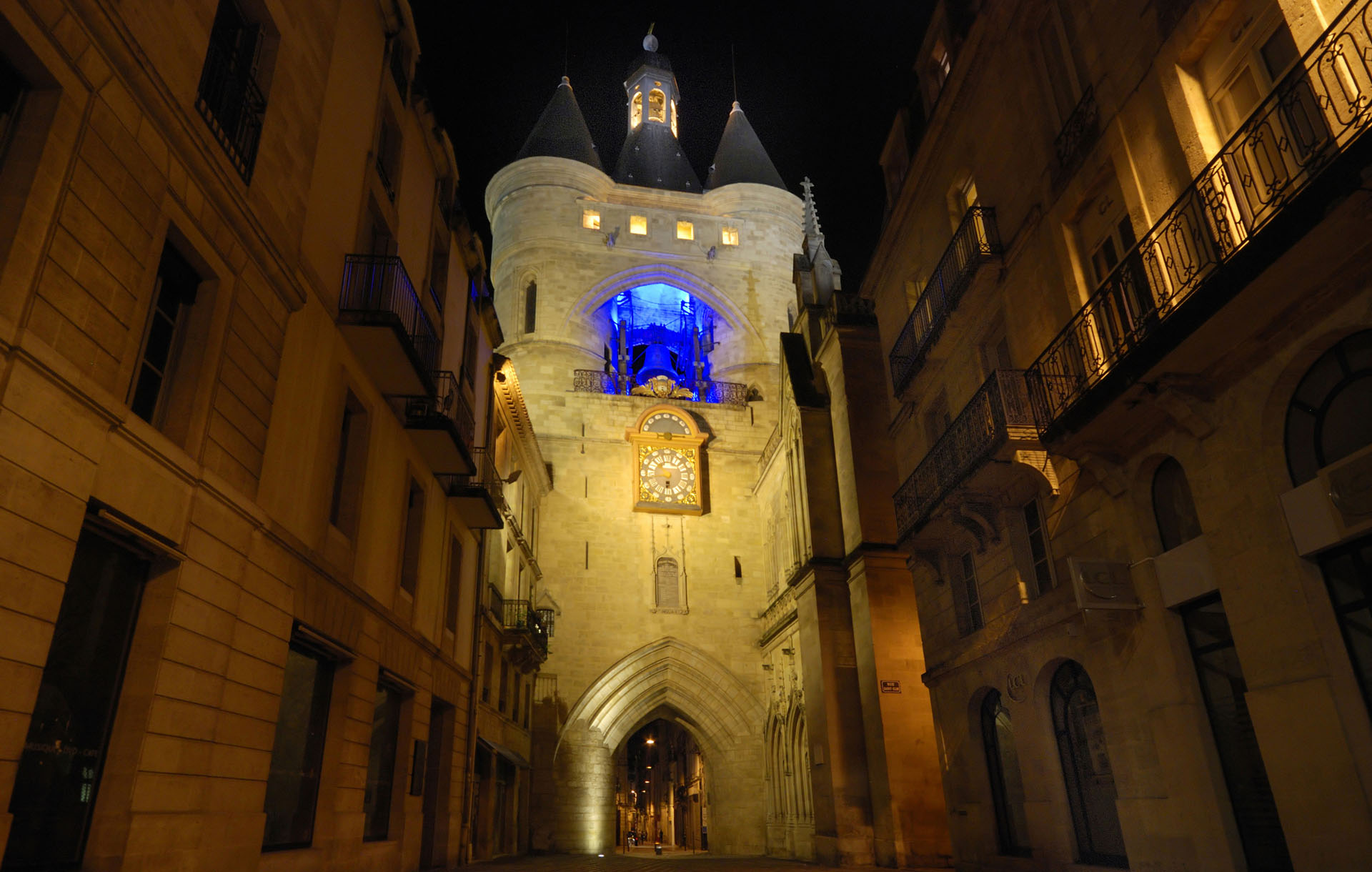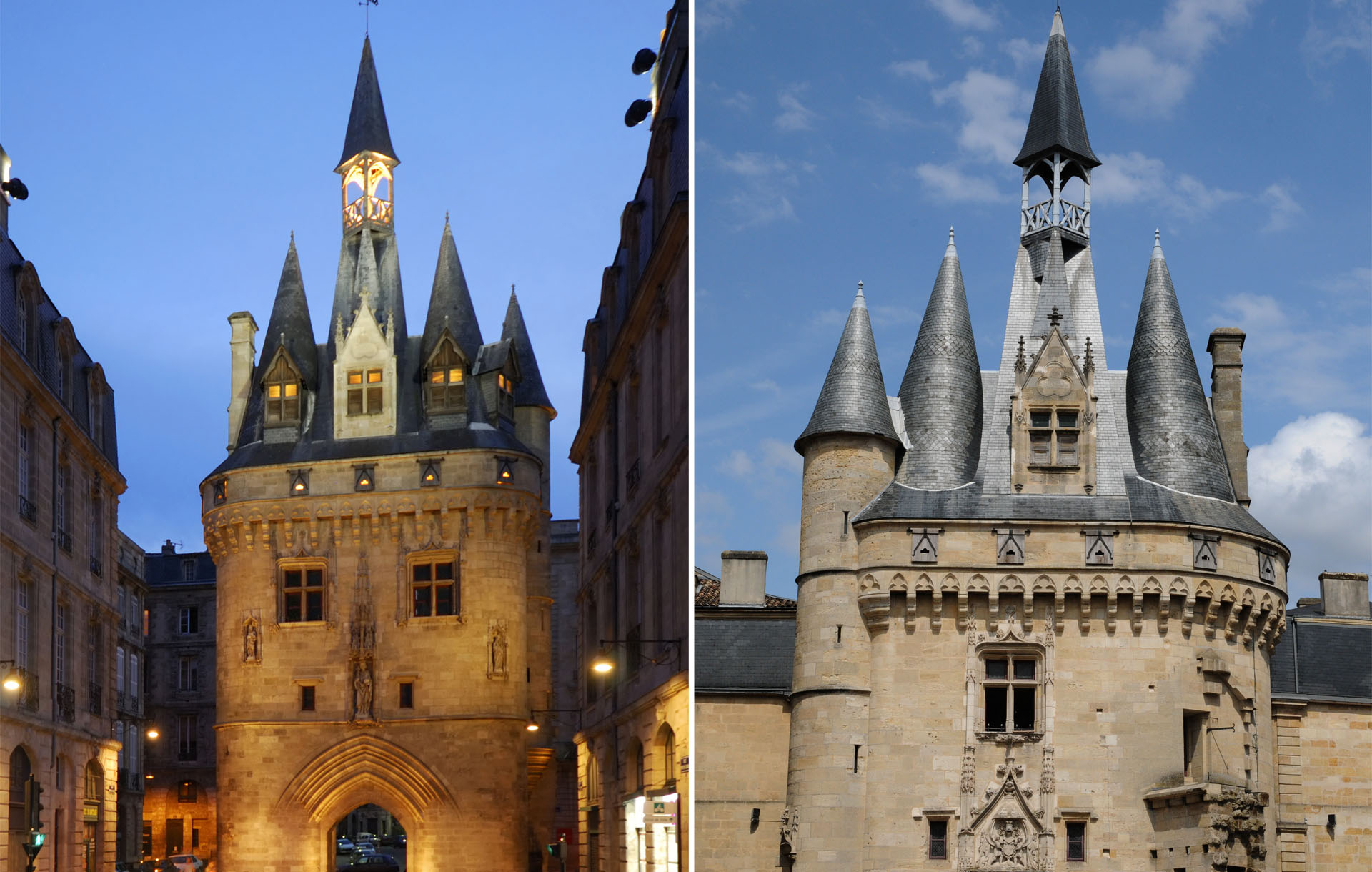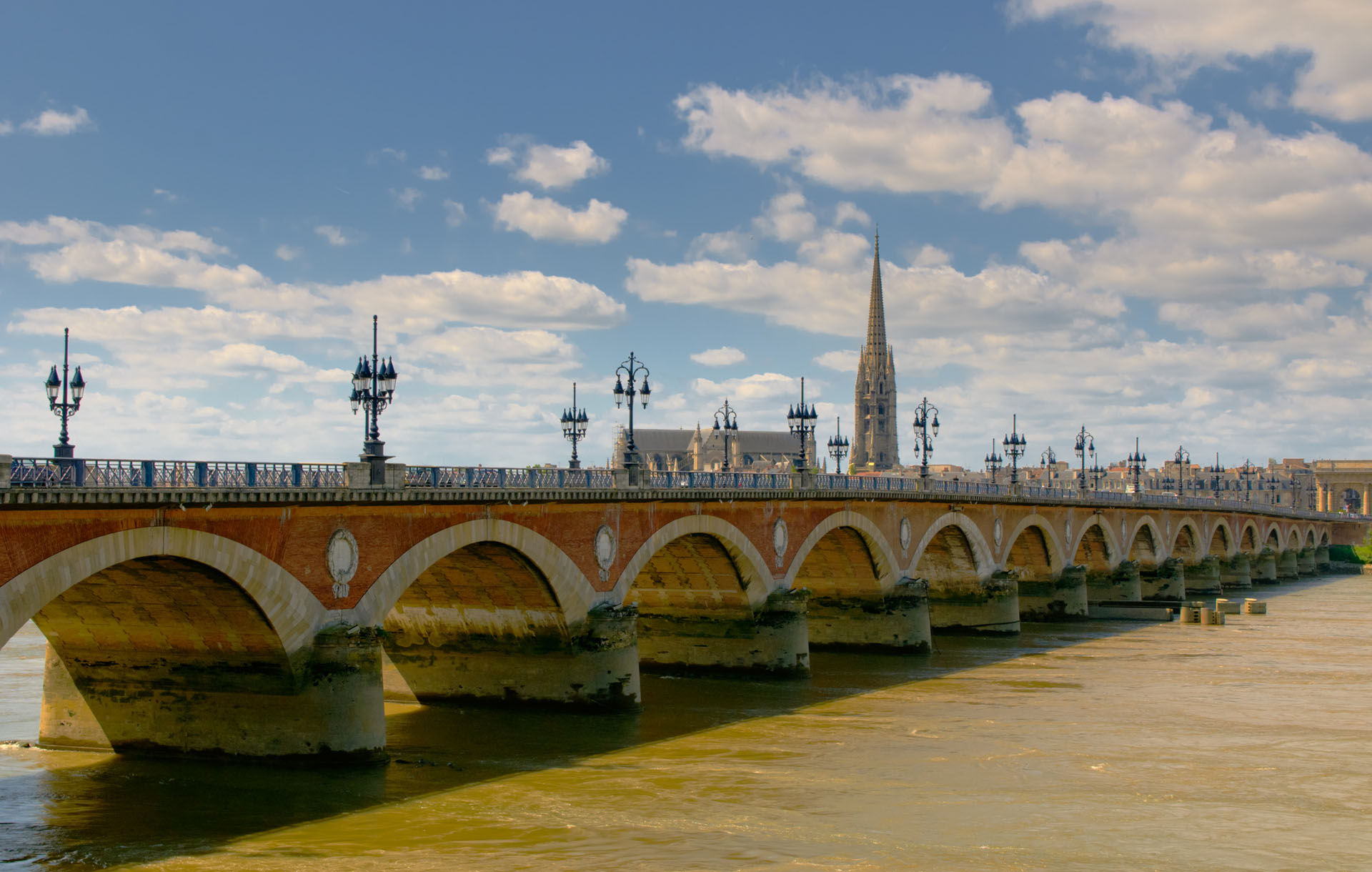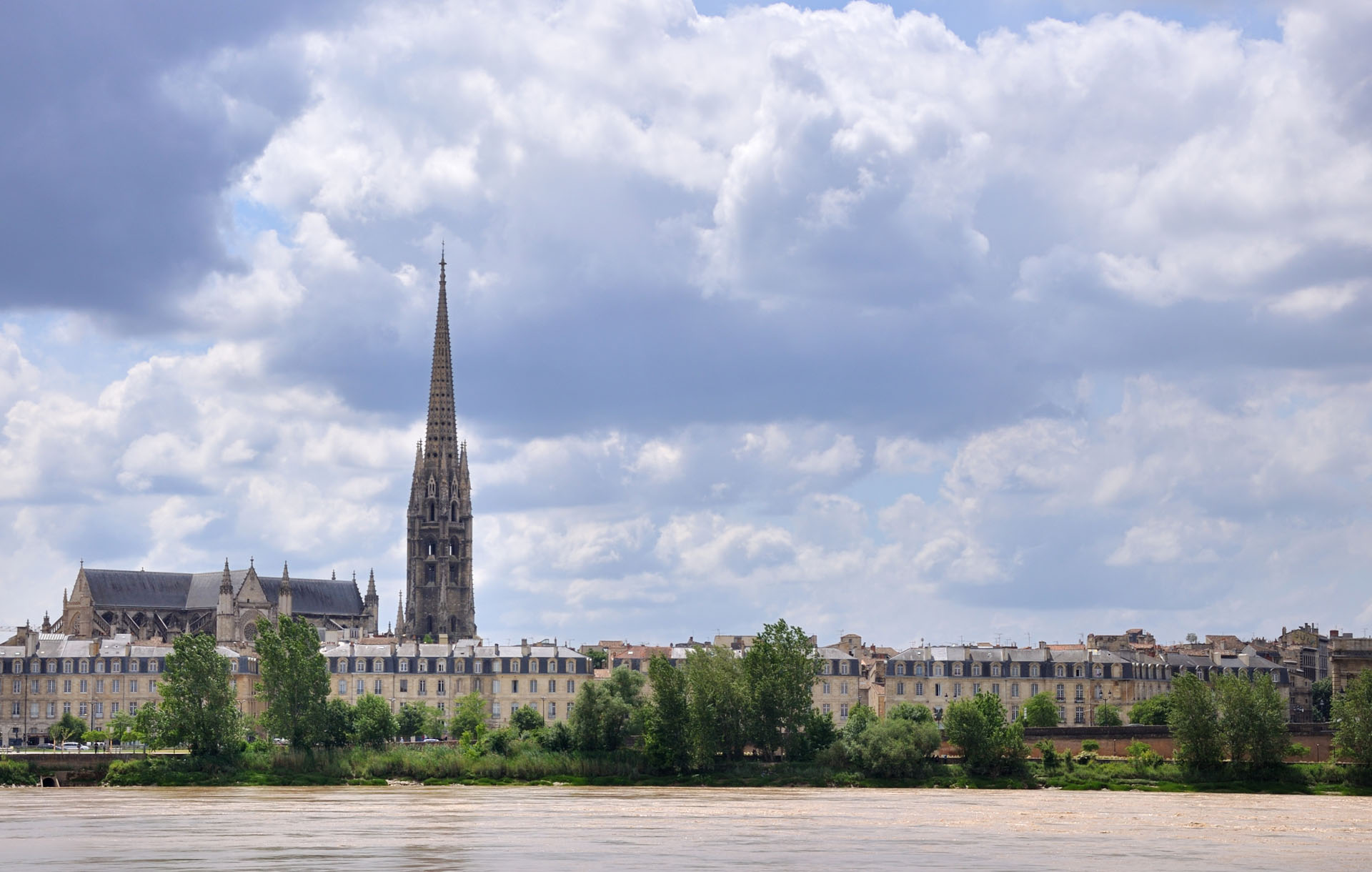Walks around Bordeaux
It was on the morning of Friday, the eight-and-twentieth day of November, two days before the feast of St. Andrew, that the cog and her two prisoners, after a weary tacking up the Gironde and the Garonne, dropped anchor at last in front of the noble city of Bordeaux. With wonder and admiration, Alleyne, leaning over the bulwarks, gazed at the forest of masts, the swarm of boats darting hither and thither on the bosom of the broad curving stream, and the gray crescent-shaped city which stretched with many a tower and minaret along the western shore. Never had he in his quiet life seen so great a town, nor was there in the whole of England, save London alone, one which might match it in size or in wealth. Here came the merchandise of all the fair countries which are watered by the Garonne and the Dordogne—the cloths of the south, the skins of Guienne, the wines of the Medoc—to be borne away to Hull, Exeter, Dartmouth, Bristol or Chester, in exchange for the wools and woolfels of England. Here too dwelt those famous smelters and welders who had made the Bordeaux steel the most trusty upon earth, and could give a temper to lance or to sword which might mean dear life to its owner. Alleyne could see the smoke of their forges reeking up in the clear morning air. The storm had died down now to a gentle breeze, which wafted to his ears the long-drawn stirring bugle-calls which sounded from the ancient ramparts.
« The white company », Arthur Conan Doyle
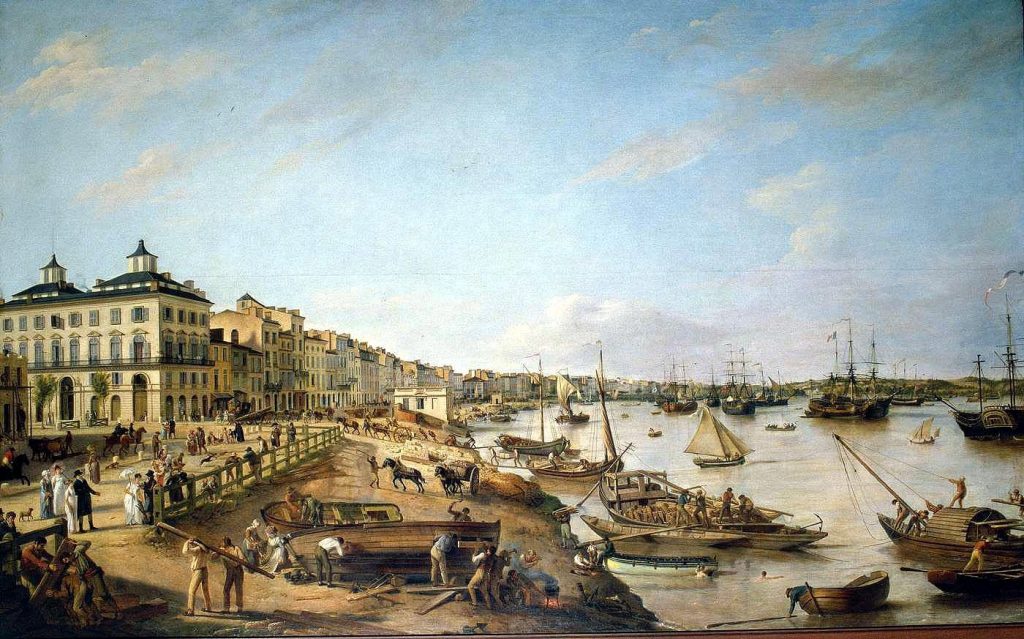
For many people, Bordeaux is traditionally associated with vast and renowned countryside vineyards. The popularity of its wines seems to have gradually overshadowed the city itself and its rich cultural heritage, which is unfair; in 2007, 150 hectares in the historic part of the city were included into the UNESCO List of World Heritage Sites. As a result, Bordeaux took second place after Paris in the number of classified sites in France. The town was also awarded the prestigious title of ‘The City of Art and History’.
THE QUAY IS WHERE BORDEAUX BEGINS
The history of Bordeaux starts on the banks of the Garonne, which carves a smooth bend in the form of a crescent and divides the city into two halves. This elegant river bend gave Bordeaux its second name – le Port de la Lune – which means the Port of the Moon. Yet it is not only this name that the river has given to the city.
Being the fourth largest waterway in France, the Garonne is navigable even for ships, and this provides a practical means for trade and the transportation of goods. The river bend also symbolizes a change in the fate of the town, as Bordeaux wasn’t always as refined and bourgeois as it is in the present day. There was a time when the city was immured in stone walls with towers and battlements to protect the city against intruders, who could arrive from the sea at any moment. In the dark Middle Ages, there was no place for comfort, luxury or beauty.
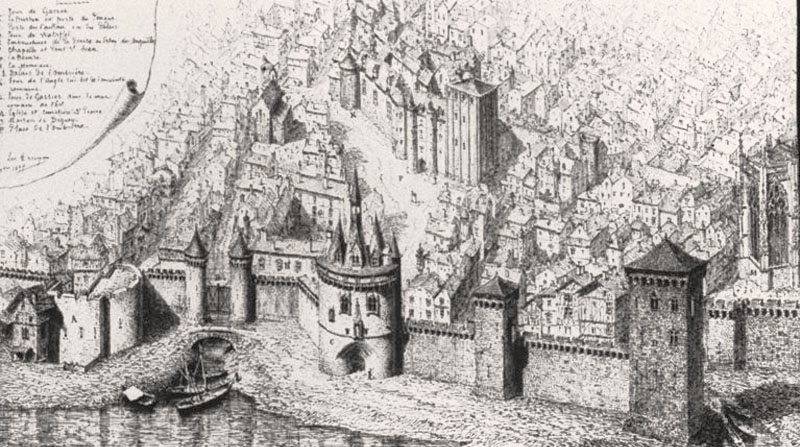
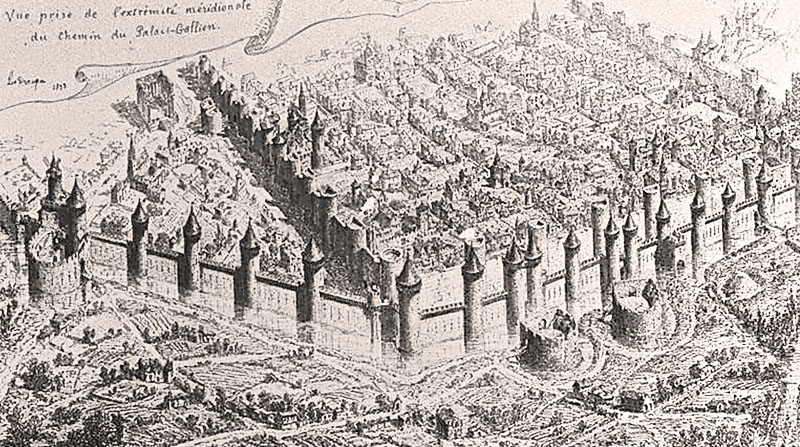
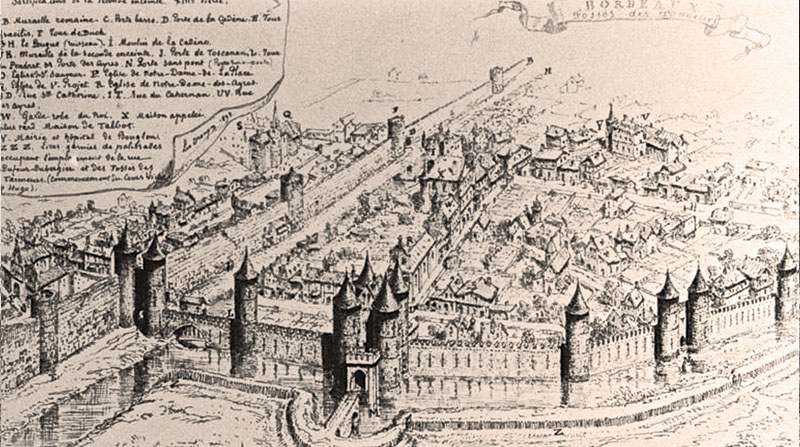
Everything changed in the 18th century, with the age of Enlightenment, new discoveries and scientific progress. It wasn’t comme il faut to continue to live in the past; it was time for transformation and the replacing of the old order with a new one. The Gabriels, Andre Porter, Victor Louis, Bonfan, Molesko and others were the architects who helped Bordeaux cast off the stone chains and opened it up to the world. Henceforth, every stranger coming to the port via the Garonne could bear witness to the wealth and power of Bordeaux. At the end of the 18th century, Arthur Young, an English economist, wrote, « I’ve read and heard a lot about the trade, wealth and splendour of this city, but what I see exceeds all my expectations ». The colossal metamorphosis of Bordeaux began long before Haussmann’s renovation of Paris, with the buildings in La Place de la Bourse being the first to be constructed. At that time, this square was called the Royal Square and the equestrian statue of Louis XV proudly stood in the place of the Trois Grâces fountain.
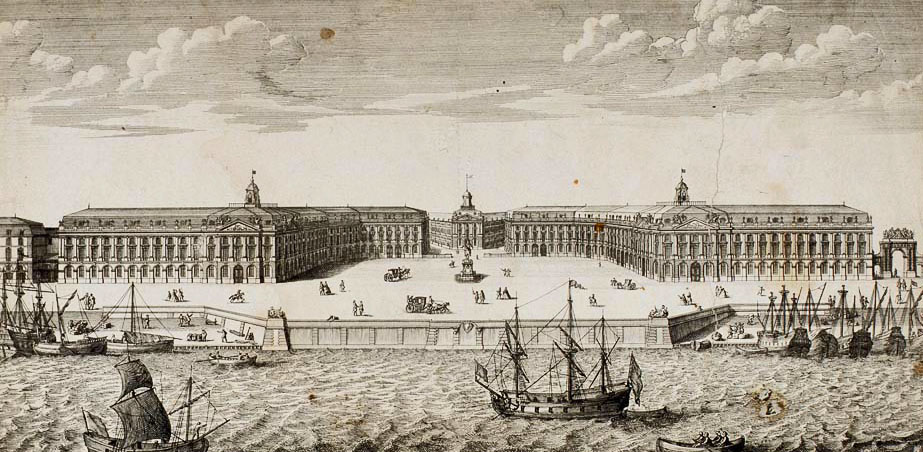
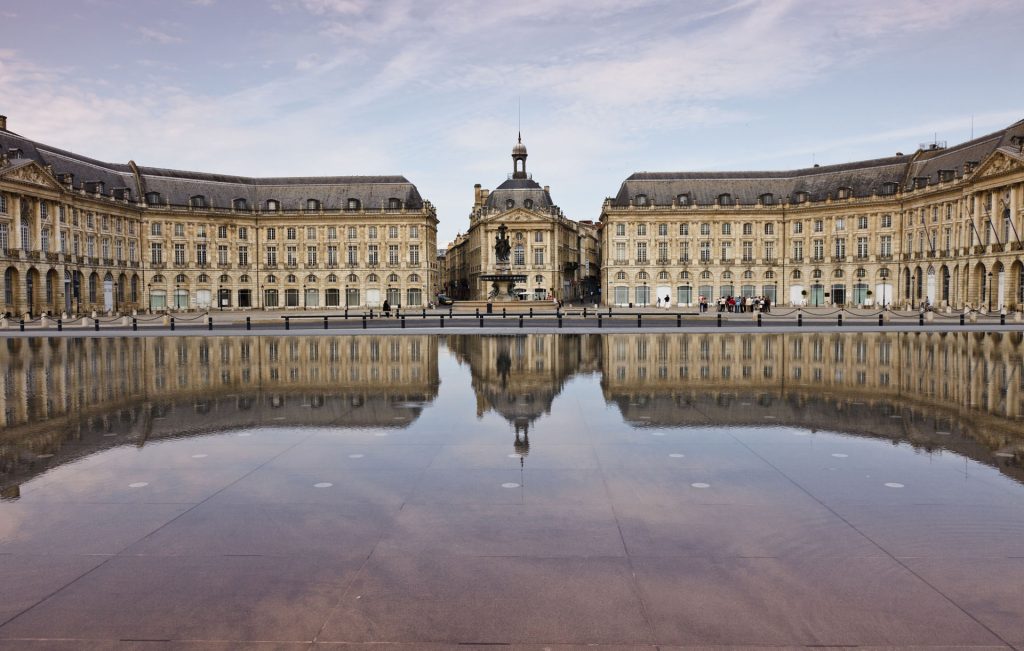
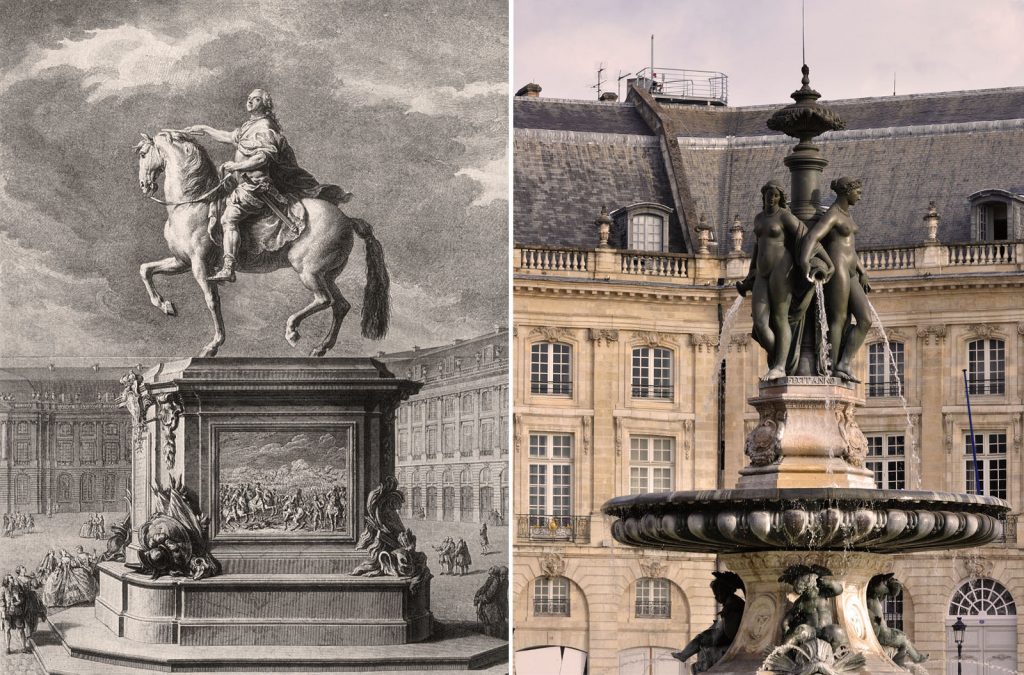
Opposite the square, across the road, is the Miroir d’Eau fountain, a masterpiece of the 21st century. Designed by Jean-Max Llorca, the piece alternates two effects: that of a mirror and that of fog. In its calm state, the water surface reflects the magnificent buildings of La Place de la Bourse, while the fog turns a part of the quay into a snow white cloud, where children run and play. During the warm summer months, the fountain becomes a favourite amusement of passers-by; energetic youngsters run barefoot, lie down and roll head over heels in the watery mist. Early in the morning and late in the evening the fountain falls into the hands of photographers, appreciators of all that is beautiful.
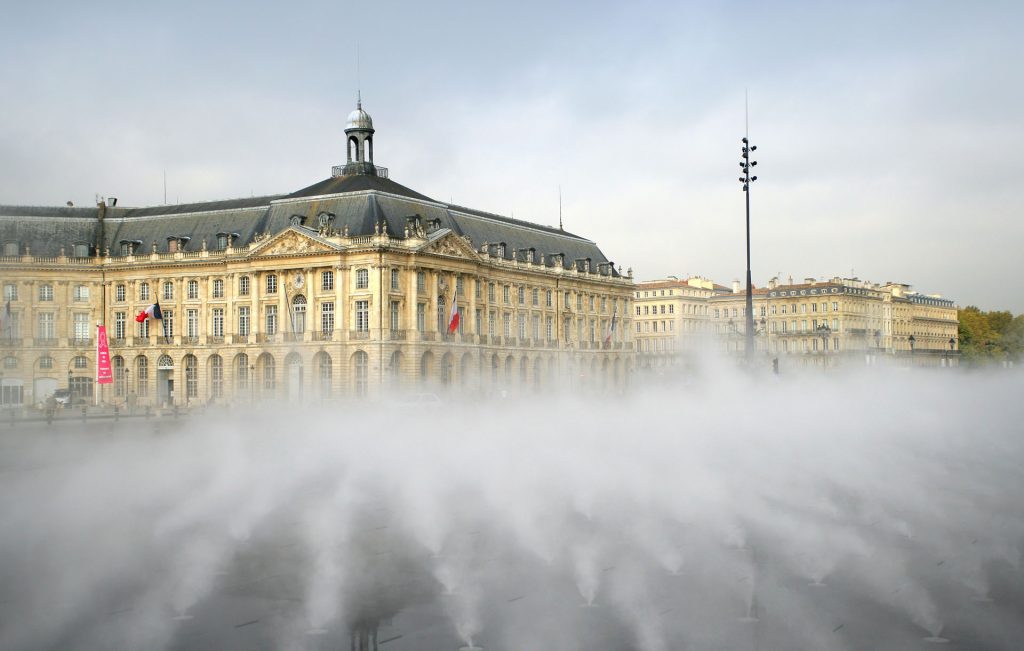
The quay is particularly stunning in the morning, blushing like a young coquette in the rays of the rising sun.
ESPLANADE DES QUINCONCES
The two rostral columns that can be seen from afar indicate the entrance to La Place des Quinconces, the largest square in France. They are reminiscent of the rostral columns in St. Petersburg, the twin city of Bordeaux. There is also the sky-piercing Girondists monument, erected in the late 19th century by the architect Rich, the sculptors Dumilâtre, Charpentier and Debrie, that climbs high into the clouds just like the Alexander Column in St. Petersburg. At the foot of the monument there are two magnificent fountains decorated by two sea horses with snake tails, with jets of water gushing from their nostrils. Interestingly, this particular spot has a history of its own. Until the early 19th century, the Trompett castle stood here, built in the 15th century to commemorate the end of the Hundred Years War and the triumph of the French over the English.
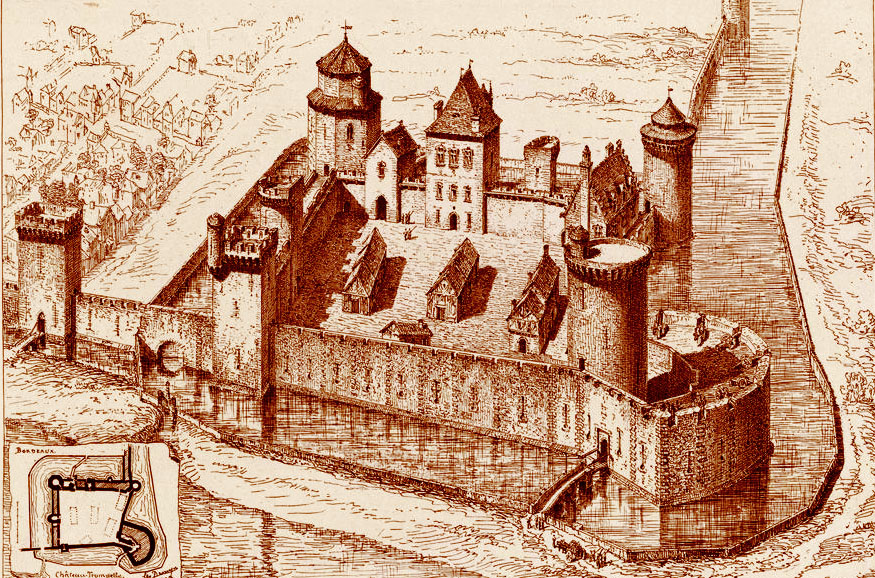
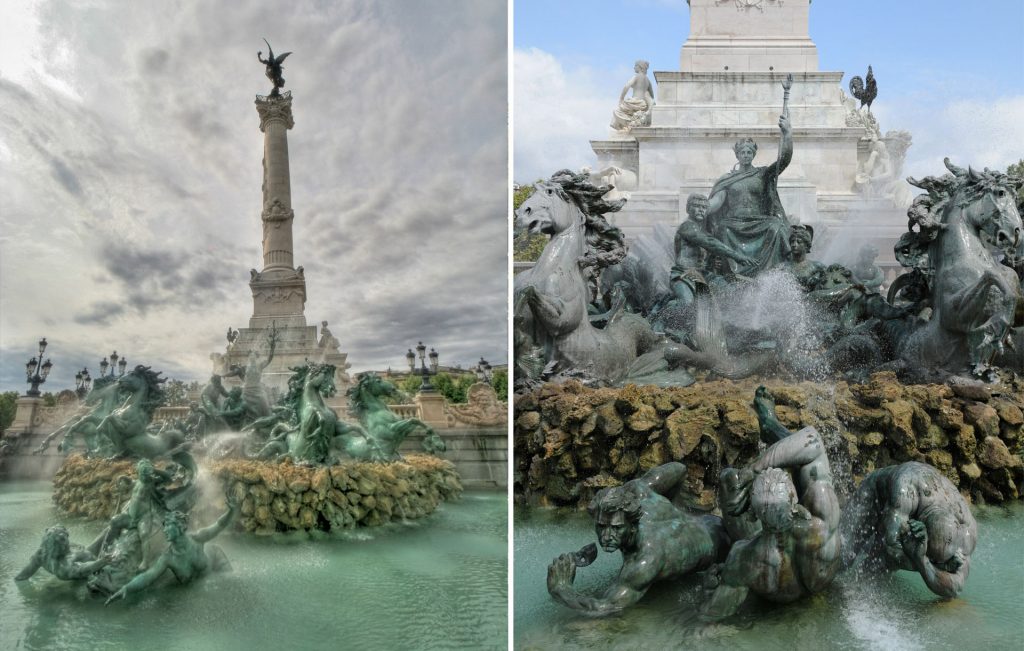
However, the stone giant was like a black spot on the city map, reminiscent of the usurpations of the Crown; it was therefore decided to demolish it. On the place where the castle once stood appeared a large space, which the municipality of Bordeaux planned to build upon. One of the projects was a fountain by the sculptor Bartholdi, which was also to be adorned with figures of spirited horses. However, the city rejected the proposal due to the high projected cost, instead selecting an equally innovative one that we can still admire today.
La Place des Quinconces is embraced by a tram line. Bordeaux can truly be proud of its modern trams, which were put into operation in 2003; they are absolutely noiseless and operate on third rail.
THE GOLDEN TRIANGLE
We leave behind the Allées de Tourny, part of the so-called ‘Golden Triangle’, an area with the most prestigious real estate and fashion boutiques in Bordeaux. This is a strategically important point for wine connoisseurs, and houses L’Intendant, a four-floor chateau wine shop, La Vinotheque de Bordeaux, Bordeaux Magnum, and the Badie boutiques.
The most famous building in the Golden Triangle is the Bordeaux Grand Theâtre, located in La Place de la Comédie. Like a reserved aristocrat, it languorously watches over the passers-by, while the nine muses and three goddesses, Juno, Minerva and Venus, exchange glances from its portico.
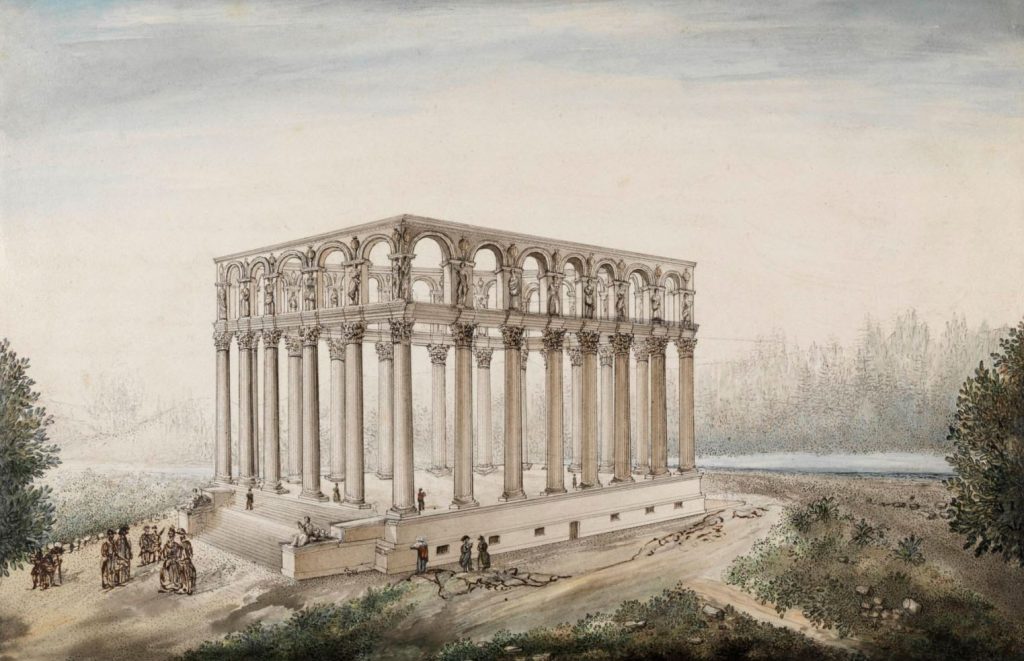
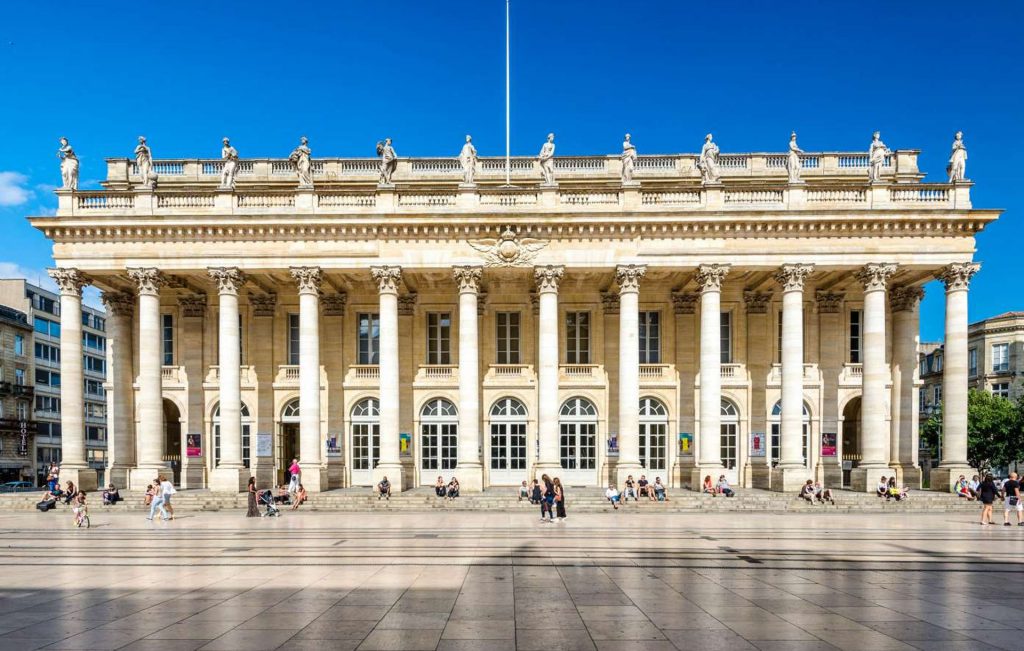
It took seven years for the architect Victor Louis to build the Grand Theâtre, and in 1780 the first theatrical season opened with the staging of ‘Athalie’ by Racine. The theatre could accommodate 1,700 spectators, which raised it to the rank of one of the largest theatres in Europe at the time. In the 19th century, its royal staircase inspired Charles Garnier to design the Grand Opera de Paris. Until the 20th century, the Bordeaux theatre remained a prominent example of European theatre architecture.
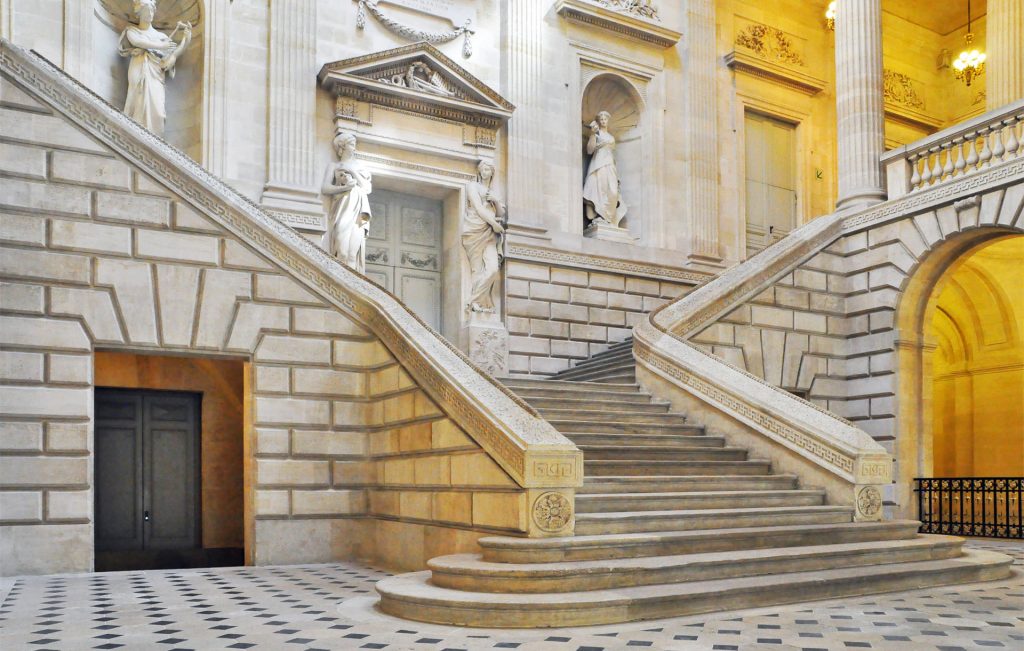
The city chronicles say that the construction of the theatre was sponsored by the patrons of art of the Masonic Lodge, that Richelieu and Victor Louis were Masons, and that the whole theatre was brimming with Masonic symbolism. For example, the number of columns is not accidental; 12 is the sum of all the edges of the Freemasons’ sacred triangle. The three goddesses, Venus, Juno and Minerva, represent the three Masonic virtues of beauty, strength and wisdom.
Opposite the theatre is the Grand Hôtel de Bordeaux (InterContinental), the former Rolly residence (Hôtel Rolly), which was built in 1779. In its new role, the Grand Hôtel was opened in 2007, its interior entirely designed by the famous French architect and designer Jacques Garcia, who also fashioned the interior of the Montparnasse Tower, the Royal Monceau Hotel in Paris and La Mamounia in Marrakech.
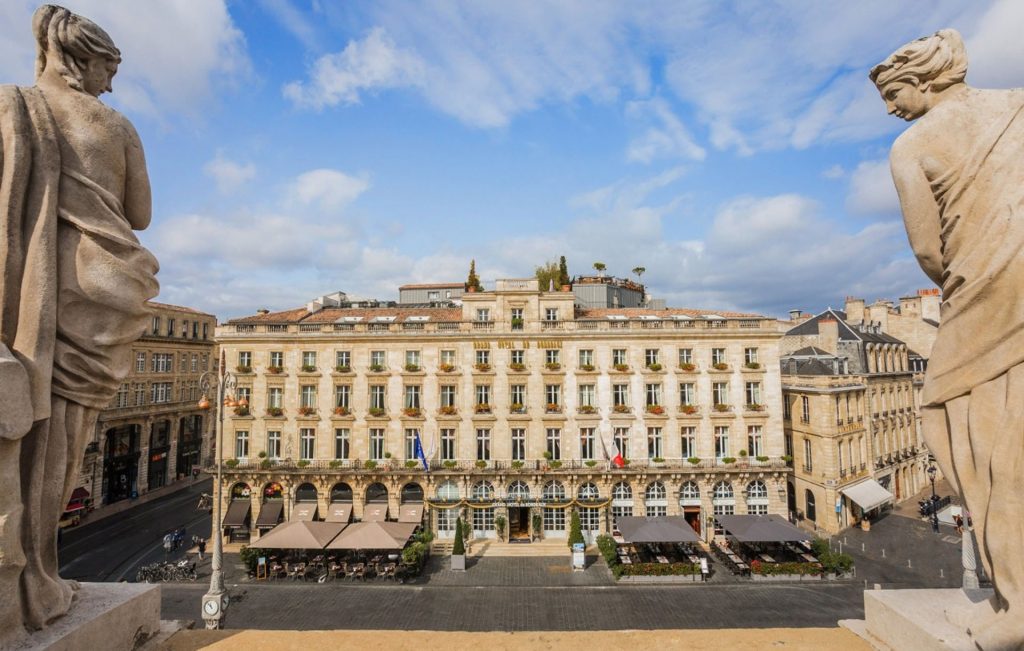
La Place de la Comédie is crossed by the two major arteries of the old town: Cours de l’Intendance, which is also known as ‘Les Champs Elysees of Bordeaux’; and Sainte-Catherine, the longest shopping street in Europe. The latter can be considered the backbone of Bordeaux that connects the parts of the city of vastly different character: the bourgeois Golden Triangle and the cosmopolitan La Place de la Victoire, popular with students. This street has more than two hundred stores, including the upmarket department store Galeries Lafayette. On Saturdays, Sainte-Catherine is overwhelmed by a flood of people that are capable of mowing down anything in their path. The elegant mansions of the 18th – 19th centuries located on Cours de l’Intendance are home to such brand stores as Louis Vuitton, Hermes, Guess, Gant, Repetto, Kenzo and others. These two streets are a paradise for shopaholics, while La Place des Grands Hommes, with its indoor city market, is paradise for gourmets.
The modern building of the market was constructed in the early 1990s and is in harmony with the architectural ensemble of the 18th and 19th centuries. Streets named after the great thinkers of the Renaissance and the Enlightenment (Voltaire, Rousseau, Diderot, Montesquieu and Montaigne) radiate out from the square. Montesquieu and Montaigne were born in Bordeaux and both even held the post of city mayor. Rue de Montesquieu is home to one of the oldest haute cuisine restaurants, called Chapon Fin. Opposite the restaurant is the Jean d’Alos fromagerie, where many famous Bordeaux chefs buy cheese for their concoctions. According to Brij-Savarin, a renowned chef, ‘A dessert without cheese is like a beautiful woman without eyes’. Jean d’Alos offers an ocean of cheese for lovers of this savoury delicacy: hard, soft, tender and ‘with character’. On Rue Malby, located in the same quarter, lies another temple of taste, the Lafitte Foie Gras Shop, where foie gras and other regional specialties are on offer.
GALLO-ROMANS, MONKS AND BISHOPS
The history of Bordeaux dates back to the pre-Christian era. The first people to inhabit it were Celtic tribes, the Bituriges, who founded a port city, Burdigala, on the left bank of the Garonne in the 3rd – 1st centuries BC. This strategically important port was then conquered by the Gallo-Romans, who made Bordeaux a growing, prosperous capital city in the vast territories of Aquitaine. Alas, time has no pity for anyone or anything, and it is only the Gallien Amphitheatre (Palais Gallien, 3rd century) that has remained since that time. A legend says that it was built by Charlemagne in honour of his wife Gallien; however, it was later discovered that the building had served as an amphitheatre and could seat twenty-two thousand spectators, and was presumably built on the command of the Roman Emperor Gallienus. Visitors can only imagine how glorious this monument used to be and what spectacular performances and fierce battles took place here. During the Middle Ages the amphitheatre was shrouded in mystery; it is said to have been a place of witches’ Sabbath, a house of ladies of pleasure and also a shelter for the homeless.
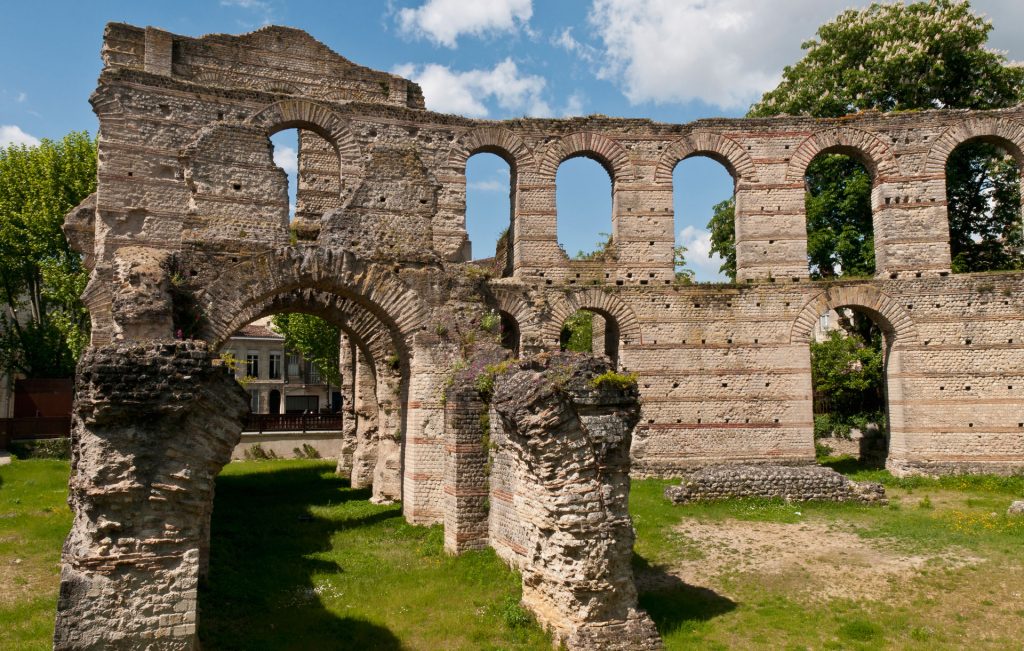
Saint-Seurin Church, named after the fourth bishop of Bordeaux, is located not far from the amphitheatre, and is a very light, airy and harmonious building. The Romanesque style is considered to help believers focus on their main objective: strengthening their spirit and faith. Legend says that Roland’s olifant, a horn on which he blew to call for help from Charlemagne during the Battle of Roncevaux Pass, was kept in the church. Pilgrims from all over Europe who follow the Way of Saint James come to the church to honour the relics of Saint Fort and Saint Seurin, as well as Roland’s olifant.
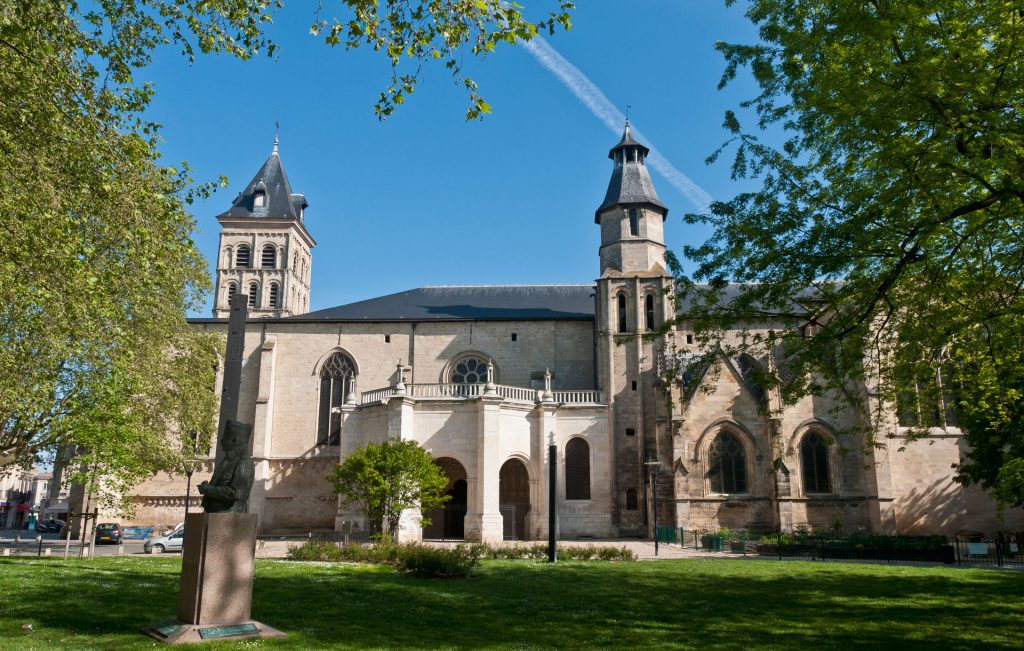
The soul of Bordeaux lies in Cathédrale Saint-André. Entering the cathedral, visitors get a feeling of travelling ten centuries back in time. The first stone of the cathedral was laid in the 11th century, and the following eight centuries saw the reconstruction, expansion and restoration of the building. The wedding of Eleanor of Aquitaine and Louis VII, the future king of France, took place here in the 12th century. Five centuries later, their nuptials were followed by those of Louis XIII and Anne of Austria. The cathedral has seen a lot throughout its existence: wars, the Inquisition, earthquakes, epidemics, riots and the French Revolution. Its sombre dark walls, made from limestone, seem to have absorbed all the anguish of these times. A little further from here stands the Pey Berland Bell Tower, built by the order of Bishop Berland in the 15th century. In the 19th century, its spire was decorated with the statue of Our Lady looking in the direction of Médoc, the Bishop’s birthplace. The largest bell, called Ferdinand, weighs eight tons. Presumably, it was named after Ferdinand Mériadec de Rohan, archbishop of Bordeaux, who also commanded the construction of the Episcopal Palace. Since the 19th century, the building has been the location of the City Hall, with Alain Juppé being the incumbent mayor.
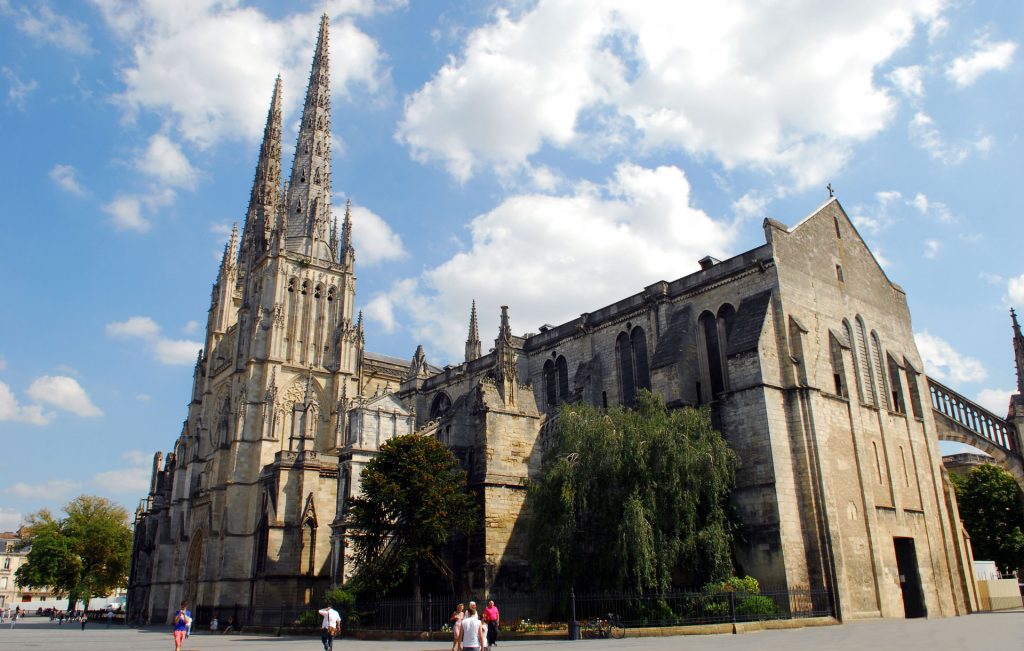
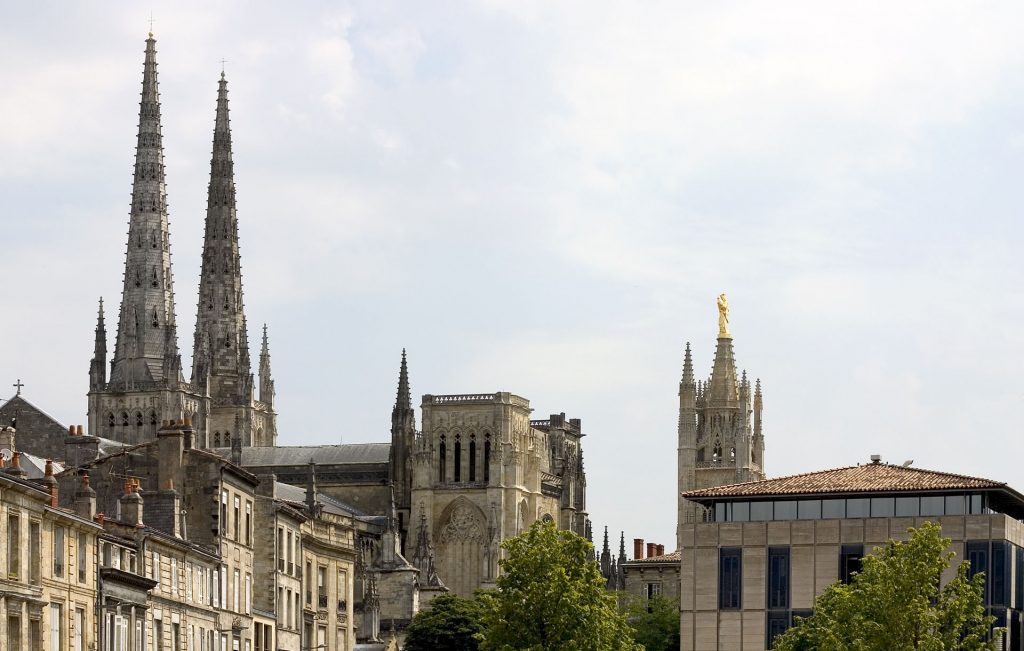
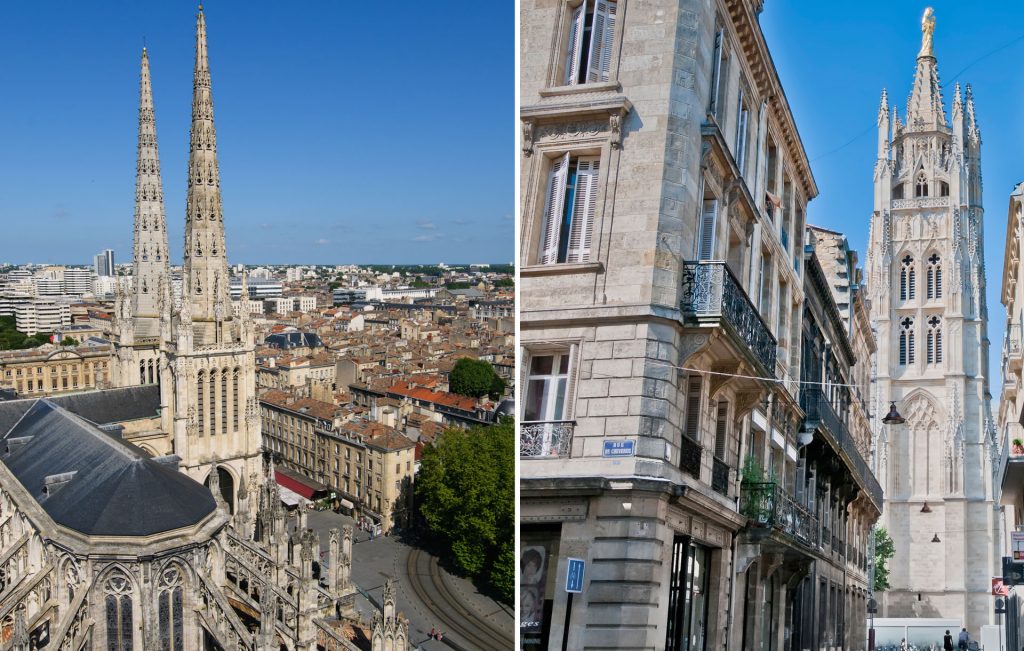
The bell tower allows a striking panoramic view of the old town. The spire of St. Michael’s Basilica and the towers of the big bell, known as the ‘Grosse Cloche’, as well as the Porte de Cailhau gate can be seen in the distance. Slightly in the foreground, the curlicue pinnacles of the cathedral are visible, resembling a forest of masts. To the side, one can see the Pont de Pierre, the bohemian St. Peter’s quarter, the bourgeois Tourney park, the Marché des Capucins, La Place de la Victoire, the Museum of Fine Arts and the Museum of Aquitaine. There are numerous other fascinating places to visit in Bordeaux, where one can stroll around and enjoy the spirit of a provincial city with a unique history and architecture.
